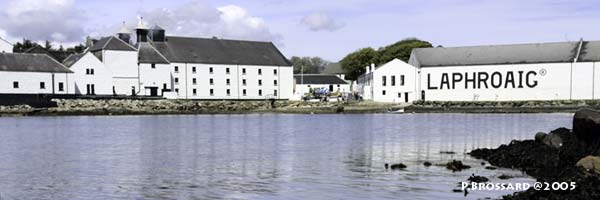 |
| The sun was present for the Laphroaig Open day and many enjoyed drinking a dram in the benched close to the bay. |
Although I had received the answer to me that there was no need to book ahead for a tour, I decided to go to Laphroaig distillery quite early. To be sure to have the early tour and to have the opportunity to buy the special bottling for the Feis Ile, a Laphroaig 13 YO cask strength, specially selected for the festival. After queuing more than 15 min., I managed to get my tickets but also learnt that they had sold their special bottling the previous Monday and sold all of them in less than 3 hours, so there was not one single bottle left for their open day! Quite a disappointment! The special bottling of last year, a 17 years old (YO) was a fantastic dram, much more complex than the regular 15 YO and also with more punch. Just hope that this 13 YO was not that good.
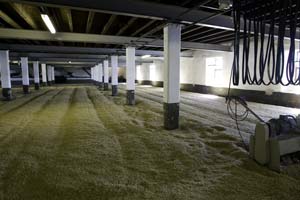 |
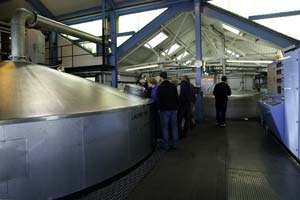 |
| The malting floors were in use and the barley was malting before being kilned and the starch extracted. | The lauter tun and the washbacks are all made of shiny stainless steel, making the cleaning of these tanks easier without (apparently) impacting on the flavours of the Laphroaig. |
As you probably know, Laphroaig is one of the few distillery malting some of its production (about 20%) on their own malting floors.
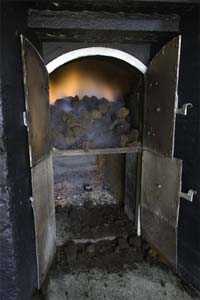 |
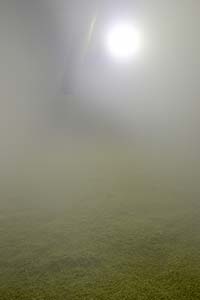 |
| I always like watching the peat fires. Although almost all distillery are extracting the peat mechanically, the peat for Laphroaig is still manually cut | The kiln was in full activity, with the peat smoke impregnating the barley. It is a common belief that smoke is always warm, but the peat smoke in the kiln was about 20°C. |
The smoky flavour of Laphroaig comes from the peat smoke used to dry the barley. The peat used in Laphroaig is manually cut and used to generate the smoke used to kiln the barley. When we see smoke, we take the assumption that smoke is always warm, but this is not the case when you open the door of the kilning floor. It is more like a cool wind with peaty flavours.
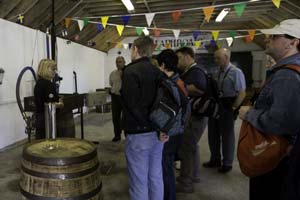 |
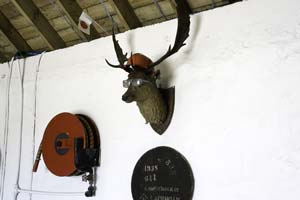 |
| The filling store was decorated and ready for having the event inside if the rain would fall during that open day, but this was fortunately not necessary | The stags of Jura have a special and unique crown. In Islay and specifically in Laphroaig, they have other unique attributes. |
After the tour, I enjoyed having lunch on the sunny terrace of the Kiln house in Ardbeg, before going back to Laphroaig for the walk to the Source.
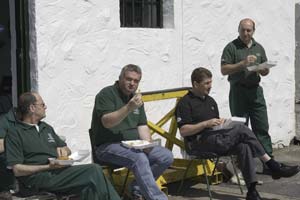 |
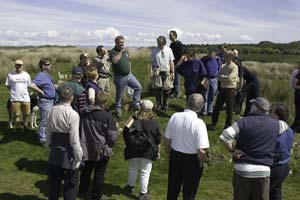 |
| The men in green were enjoying the sun and their lunch, but where have they hidden their bottles of Laphroaig? Are traditions getting lost? | The walk to the source was very pleasant, with a nice view of the distillery and of Ireland. |
The walk was short but pleasant and enjoyed chatting with the different workers accompanying us. Since they are the men producing the whisky, better to talk to them than to their marketing division!
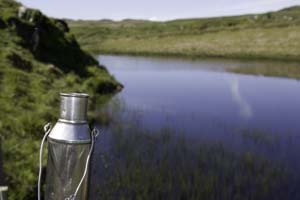 |
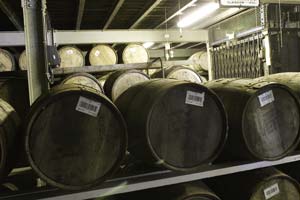 |
| The Kilbride Dam is the water source used for making the Laphroaig Whisky, not so big but pretty deep | The quarter cask was the new idea of Laphroaig and successfully managed to keep it secret for quite a long time. Competitors have also started to produce those quarter casks. |
Tasting the water coming from the Laphroaig source was interesting and if you have the opportunity to try it, you will better understand why that the whisky should be drunk with its source water. The water of the Kilbride source is soft and round, but has also a strong peaty taste.
And to complete my open day in Laphroaig, I had the opportunity to have a look at their quarter casks. In comparison to the regular casks, they look like dwarfed and cigar-like shape. Although they are as deep as regular casks, their diameter is much smaller and they contain only a quarter of cask of whisky, thus allowing the whisky to mature much faster. How much? This is a secret, but I would guess about 2-3x faster.
I am quite used to the sea weedy, peaty and vigorous taste of Laphroaig and the quarter cask is quite surprising: much of the Laphroaig's clamour is lost, but compensated by a more rounded and sweet (somewhat complex) taste. If you find the regular Laphroaig to aggressive, try this one!